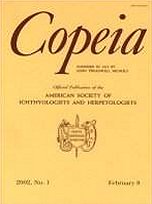Current theory predicts that (1) locomotor performance of amphibians should exhibit greater thermal sensitivity in aquatic than in terrestrial habitats, and (2) amphibians lose the ability to acclimate locomotor performance to different temperatures after metamorphosis. To test these predictions for a semiaquatic plethodontid salamander (Pseudotriton ruber), I measured aquatic and terrestrial burst speeds of metamorphosed individuals at 8 C and 18 C after acclimation to 8 C and 18 C. Both aquatic and terrestrial speeds exhibited thermal sensitivity, which paralleled that for cycle frequency (tail or leg), but terrestrial speed had a significantly greater thermal sensitivity. Aquatic speed was significantly greater at 8 C acclimation, whereas terrestrial speed was not affected by thermal acclimation. Scaling of locomotor performance was significantly different in water than on land and was significantly affected by temperature. My results indicate that (1) aquatic burst speed has less thermal sensitivity (perhaps related to a greater importance of burst speed in aquatic habitats), and (2) a partial positive compensation in aquatic burst speed occurs at low acclimation temperature (perhaps related to seasonal activity in cool aquatic habitats). However, because the compensatory increase in swimming speed at low acclimation temperature was much less at low test temperature (a 6% increase) than at high test temperature (an 18% increase), this may not be a beneficial acclimation response.
How to translate text using browser tools
1 December 2003
Aquatic and Terrestrial Locomotor Performance in a Semiaquatic Plethodontid Salamander (Pseudotriton ruber): Influence of Acute Temperature, Thermal Acclimation, and Body Size
Glenn A. Marvin
ACCESS THE FULL ARTICLE





